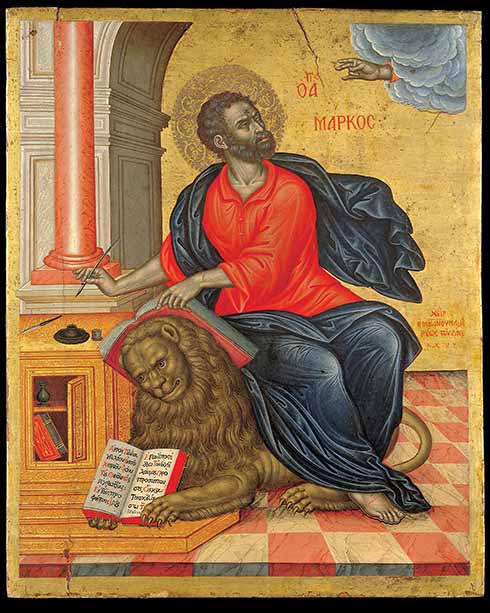 Each year, the season of Advent marks the beginning of a new Church Year, and a new year in the three-year liturgical cycle. This year (2023–24) is Year B, when we read the Gospel according to St Mark on most Sundays. (Occasionally Mark is replaced by extracts from St John.) Mark, Matthew, and Luke are referred to as synoptic Gospels (from the Greek, ‘seeing together’), and they share more or less the same theology and vision of Jesus. In Years A and C, we read Matthew and Luke respectively.
Each year, the season of Advent marks the beginning of a new Church Year, and a new year in the three-year liturgical cycle. This year (2023–24) is Year B, when we read the Gospel according to St Mark on most Sundays. (Occasionally Mark is replaced by extracts from St John.) Mark, Matthew, and Luke are referred to as synoptic Gospels (from the Greek, ‘seeing together’), and they share more or less the same theology and vision of Jesus. In Years A and C, we read Matthew and Luke respectively.
DATE OF ST MARK’S GOSPEL
After Jesus’s death and resurrection, accounts of his life and teaching were told orally to new converts – either in Aramaic (the language of Jesus himself), or in Greek (the dominant language of the day). Gradually these accounts were written down. The collection of writings we now know as Mark’s Gospel was probably written in Rome around 65–70CE.
AUTHORSHIP
For many years, St Matthew’s Gospel was thought to be the earliest, but it is now widely accepted that St Mark is not only earlier, but also a main source for both Matthew and Luke. According to tradition, Mark was a travelling companion of Paul, a cousin of Barnabas and possibly a disciple of Peter. However, because his sources seem to derive from both oral and written material, it is generally agreed that Mark did more than simply transcribe what Peter told him. A man named Mark was certainly a follower of Paul and Peter, though we cannot be sure whether this same Mark wrote the text now recognised as Mark’s Gospel.
AUDIENCE
St Mark’s Gospel was written for non-Palestinian Christians of Gentile (non-Jewish) origin. In contrast with St Matthew, Mark is much less concerned with linking his stories with the Old Testament. He often explains Jewish customs, gives geographical indications and stresses the meaning of the Gospel message for pagans.
STRUCTURE
Mark does not attempt to give us a chronological life of Jesus. His Gospel can be divided into two halves: the first centred around Galilee and northern Palestine; the second describing Jesus’ journey towards Jerusalem, and his final moments. Over half of Mark’s text is concerned with the Passion of Christ.
PURPOSE
Mark’s main purpose is to give his readers an understanding of who Jesus is. His ministry gradually reveals his identity: his status as Messiah, Son of God, and suffering Son of Man. Mark shows Jesus acting and preaching with authority. His suffering and death are always linked to his Resurrection, and Mark ensures that his readers understand that the path to glory and eternal life involves suffering. Christians living at the end of the first century suffered much persecution and would have been comforted by this text. They could immediately see how relevant Jesus’s life was to their own lives.
SYMBOL OF ST MARK: THE WINGED LION
Artists and iconographers often depict St Mark with a winged lion, suggested by Mark’s description of John the Baptist ‘crying out in the wilderness’ (Mark 1: 3), bringing to mind a roaring lion. The lion also appears in a vision of the prophet Ezekiel (Ezekiel 1: 10), where the four-winged creatures were later taken to represent the four evangelists.
Courtesy of St Beuno’s Outreach, the Diocese of Wrexham, UK
Image: Wiki Commons